Wild thing: The best ways to cook with wild garlic
Ramsons grows in abundance in the wild and thanks to its culinary boom, is up there with the likes of rhubarb and asparagus. Tom Shingler shares his favourite ways to make the most of the seasonal gift that is wild garlic
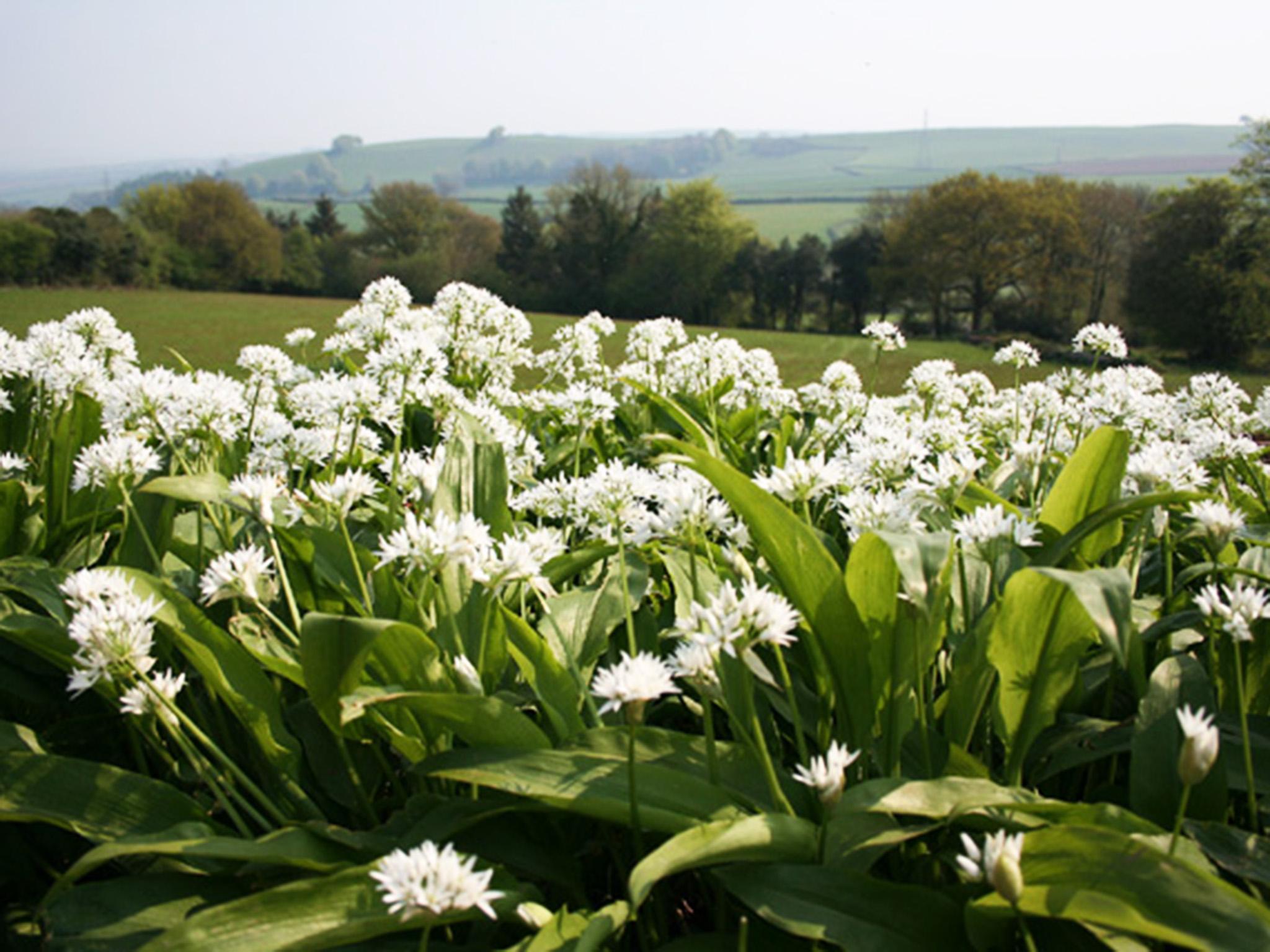
Caught a whiff of garlic on a countryside walk recently? Don’t worry, you haven’t stumbled upon a vampire-slayer’s hideout or wandered into a feral chef’s woodland kitchen. It probably means you’re near a patch of ramsons or wild garlic, one of Britain’s most beloved foraged ingredients and the culinary harbinger of spring. With long green leaves and delicate white flowers – both of which are delicious – they’re an absolute joy to cook with.
More big, garlicky chive than the bulbs and cloves of the regular variety, wild garlic has a slightly more floral, aromatic and mellow flavour. It’s only around until June, so do pick some leaves if you come across a patch – it grows prolifically, can be easily identified by its strong smell and just needs a quick wash and trim before it’s used in cooking (do avoid any that grows by the roadside, however, as passing cars and dogs can leave their marks).
Once you’ve plucked your leaves – or bought them at a farmers’ market – you can cook them in all sorts of tasty ways. Simply wilting them in a pan, chopping them up into a salad or even nibbling on them raw are perfectly acceptable; but if you want to really make the most of this quintessentially British and seasonal ingredient, take a look at how Britain’s best chefs incorporate it into their dishes.
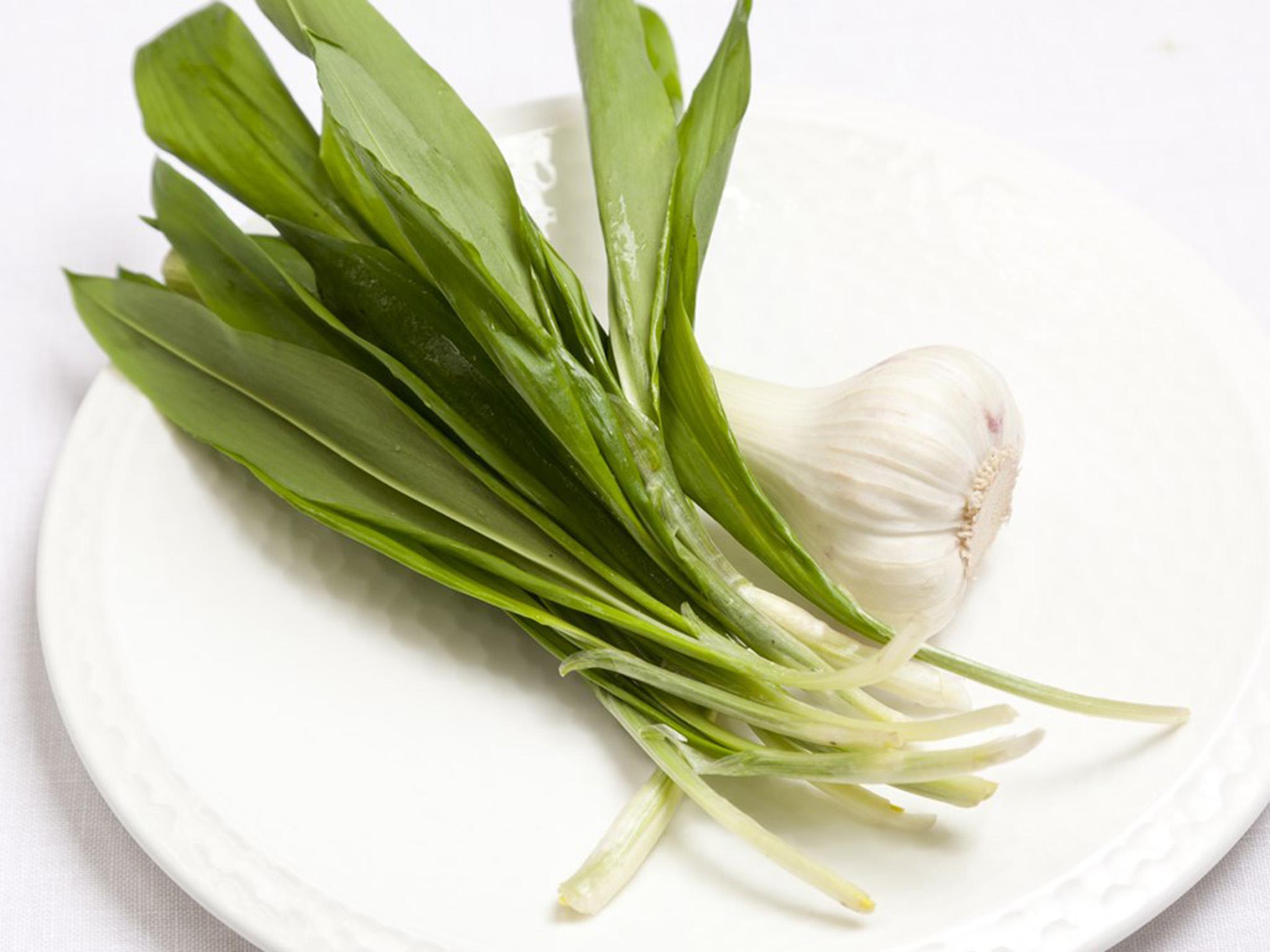
Chicken with wild garlic and asparagus by Colin McGurran
6 chicken thighs
70g of salt
5g of garlic
1 sprig of thyme
10g of butter
One of the most common ways of cooking wild garlic – and with good reason – is by pairing it with other ingredients at the height of their season in spring. Asparagus and wild morel mushrooms are highly prized for their unmistakable flavour; combine them with the heady scent of wild garlic and you’ve got a spring feast on your hands.
Colin McGurran gives this trio of ingredients the fine-dining treatment by matching them with pan-fried chicken thighs, whipping the wild garlic into a velouté (it’s easier than you think) and serving the morels raw with a few slices of button mushroom for extra earthiness. With a few wild garlic flowers scattered over the top, this is a deceptively simple recipe that would make the ultimate springtime dinner-party dish.
Wild garlic velouté
300g of wild garlic
50ml of milk
500ml of cream
10g of salt
To serve
140g of morels
10 asparagus spears
4 button mushrooms, thinly sliced
1 handful of wild garlic flower, optional
To debone the chicken thighs, place each thigh, skin-side down, on to a board and use a sharp knife to cut along either side of the bones. Slide the knife underneath the bone and run it down the underside to release the entire piece. In a suitable container, salt the thighs for 2 hours. Wash and dry the meat before storing, skin-side up, in a vac pac bag (or wrapped in clingfilm) overnight.
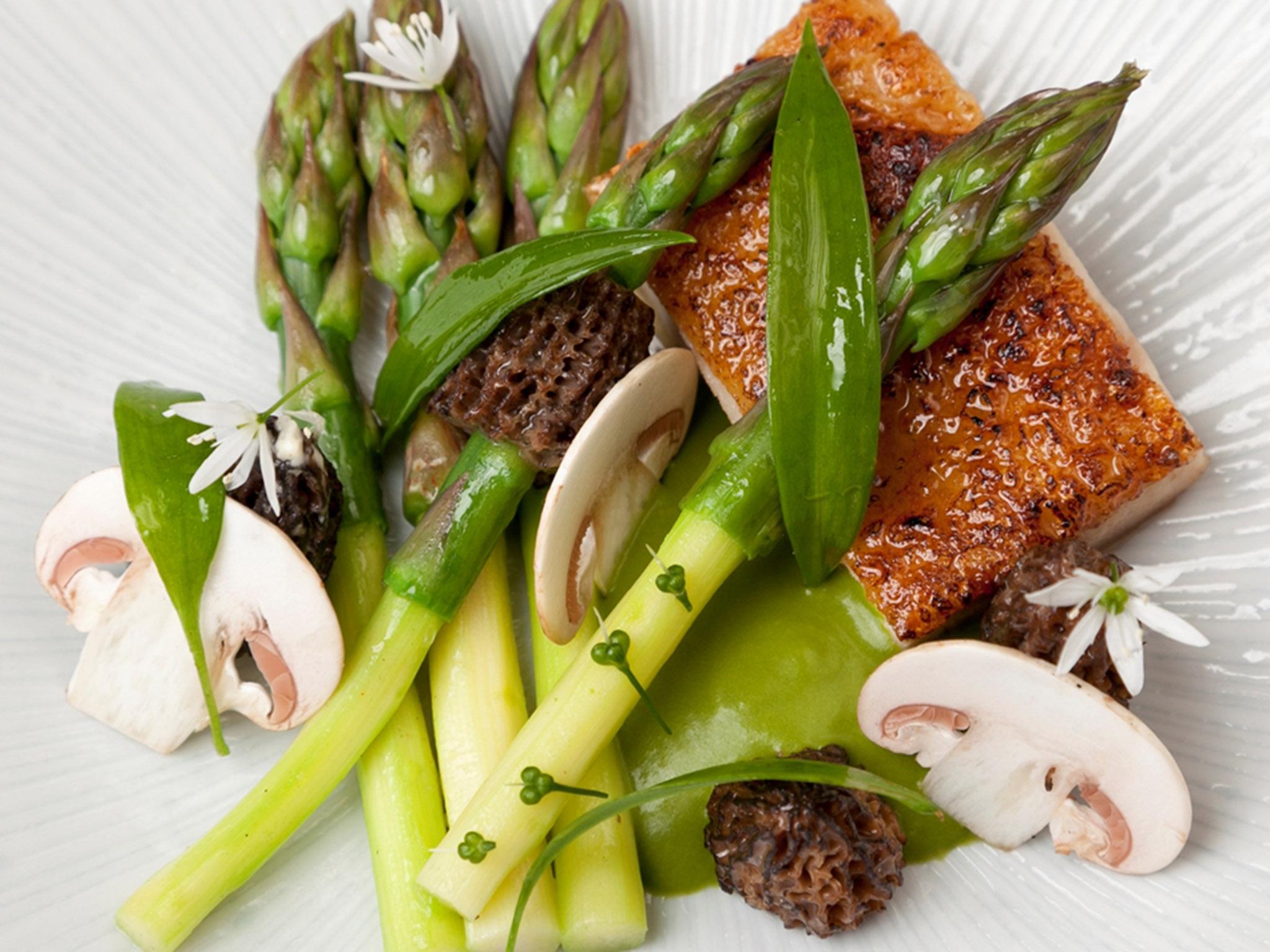
To prepare the morels, wash 3 times in cold water, changing the water every time to ensure they are well cleaned. Place on a tray lined with kitchen towel and leave to dry in the fridge for 2 hours, before covering in clingfilm.
For the wild garlic velouté, bring the milk and cream to the boil, add wild garlic and salt and return to the boil. Remove from the heat and allow to cool slightly. While still warm, pass through a fine strainer into a bowl set over ice. Set aside until ready to serve. For the chicken thighs, add a small amount of rapeseed oil to a large frying pan and place over a medium-high heat. Add the thighs to the pan, skin-side down, and cook for 4 minutes until golden brown.
Reduce to a low heat and turn the thighs over. Add the butter, thyme and garlic and cook for an additional 1 minute. Use a spoon to baste the chicken continuously for 2 more minutes, then remove from the heat and keep warm. Trim the woody ends off the base of the asparagus and peel halfway up the spear, leaving the top unpeeled. Blanch in salted boiling water for 2 minutes. Remove from the pan and keep on a tray lined with kitchen towel in a warm place
Place the thigh, skin-side up, under a hot grill to crisp up the skin. Portion and square off the edges of the thigh. Arrange the thighs on to plates with the morels, velouté, asparagus and wild garlic flowers. Serve immediately
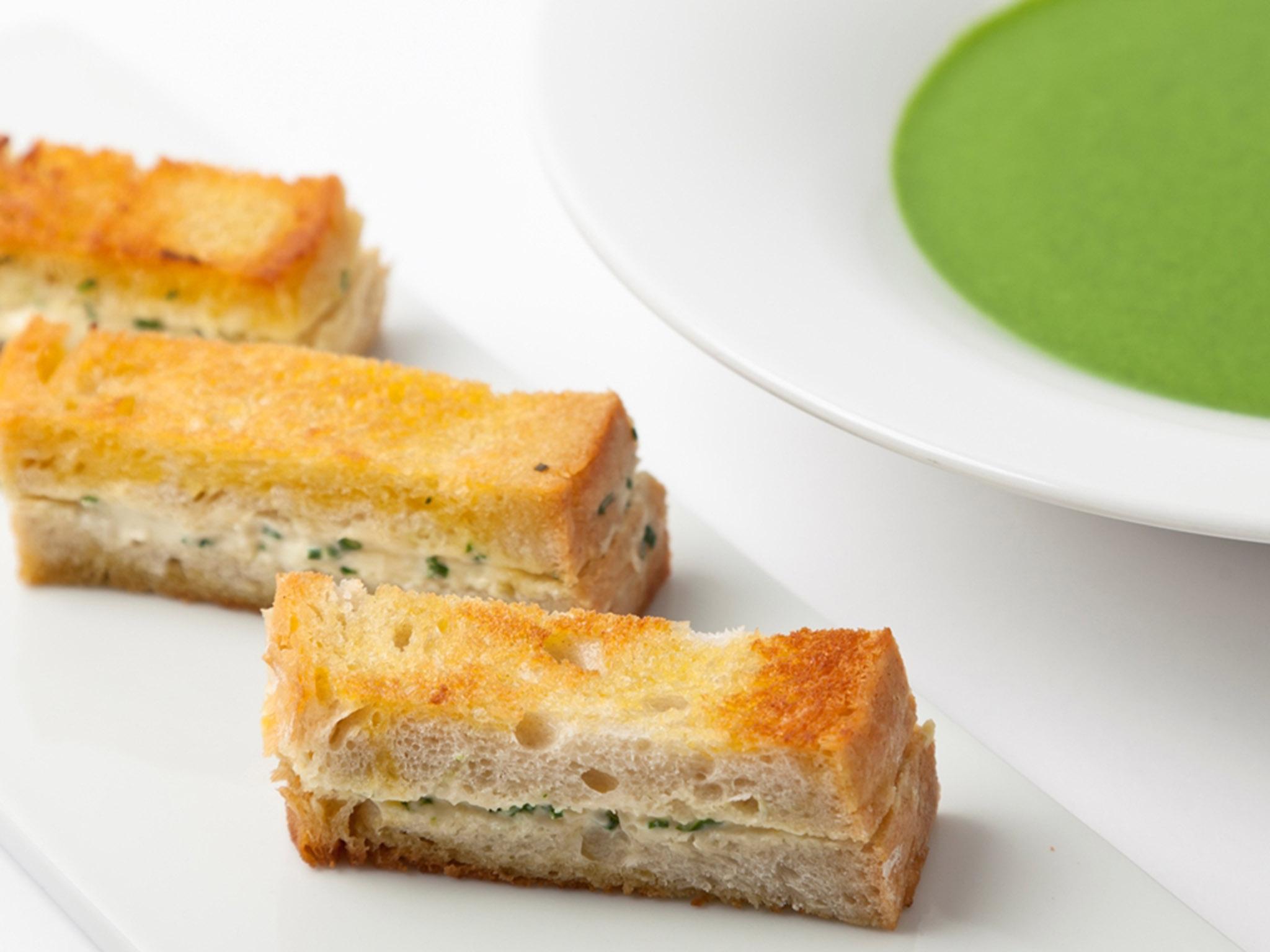
Spinach soup with wild garlic toasts by Adam Gray
A bowl of soup and a bit of bread – not exactly the most exciting meal to tuck into. Unless, of course, it’s Adam Gray’s spinach and wild garlic soup, with some dainty wild garlic and cream cheese toasts on the side. By leaving some of the leaves raw for the toast and cooking the rest in the soup, you get a double-whammy of wild garlic flavour, and the generous amount of spinach results in a stunning vibrant green colour.
Spinach soup
50g of butter
250g of shallots, finely sliced
200g of potato, finely sliced
1.75kg spinach leaves
50g of wild garlic leaves
1.75l vegetable stock
Salt and pepper
Wild garlic cheese toasts
200g of cream cheese
15g of wild garlic leaves, raw and finely chopped
1 egg yolk
8 brown bread rolls
Olive oil
For the spinach soup, melt the butter in a heavy-based pan. Add the shallots and potatoes. Sweat with no colour until the vegetables start to soften. In another pan, bring the vegetable stock to the boil and remove from the heat. Add the picked, pre-washed spinach and wild garlic leaves. Sweat for a further minute only and remove from the heat. Add the boiling stock and blend until smooth immediately to retain the fresh, green colour.
Pass through a fine sieve into a bowl over ice. This is done to cool the soup quickly to stop browning. Season to taste with salt and pepper. For the wild garlic cheese toasts, divide the egg yolk in half, discarding one half. Mix all the ingredients together except the bread rolls and olive oil, seasoning with the salt and pepper to taste.
Slice the top and bottom off the rolls and then cut in half. Spread 2mm-3mm of the cheese mixture on one side of one half of the roll, evenly. Place the other half on top, making a sandwich. Repeat with the rest of the rolls. Place in the fridge for 10-15 minutes to set. Heat a generous amount of olive oil in a frying pan and fry the rolls on both sides until golden brown. Serve the spinach soup with the wild garlic cheese toasts on the side.
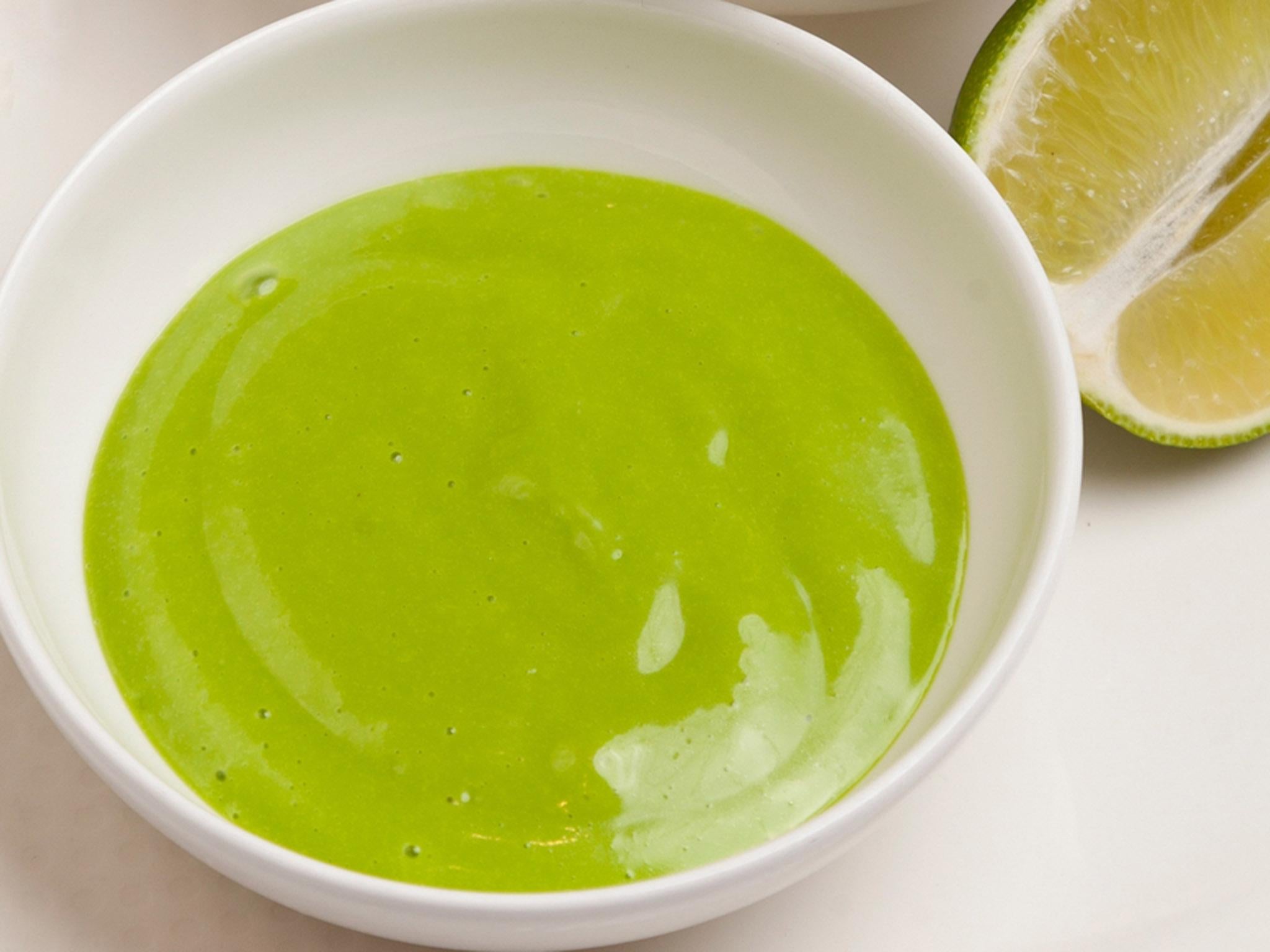
Wild garlic mayonnaise by Pete Biggs
Going one step beyond the bright green of Adam Gray’s soup above is Pete Biggs’ amazing wild garlic mayonnaise, which is so vividly green it’s almost fluorescent. It’s easy to make – you just need a coffee filter or muslin to strain the infused rapeseed oil before whisking it into a traditional mayonnaise – and it will keep for a few days in the fridge. However, we can’t see it lasting longer than a few hours; chips, asparagus spears, breadsticks and anything else you have to hand simply beg to be dipped in this incredible British take on aioli.
90g of wild garlic
450ml of rapeseed oil
3 egg yolks
1 tbsp English mustard
2 tbsp white wine vinegar
Salt and pepper
First make the wild garlic oil for the mayonnaise. Rinse the wild garlic, then blanch of 35 seconds in a pan of heavily salted, boiling water. Drain the water and plunge into some iced water, then pat dry with some kitchen towel. Chop the wild garlic roughly and add to a blender, then pour in the rapeseed oil. Start blitzing on a low speed, then increase in speed for 30 seconds to 1 minute, until the oil is a bright, vibrant green colour.
Pass through a fine sieve, then through a sheet of muslin or a coffee filter. Keep in the fridge until needed. Whisk the egg yolks, mustard and vinegar in a bowl until smooth. Continue whisking and pour in a thin, steady stream of the wild garlic oil.
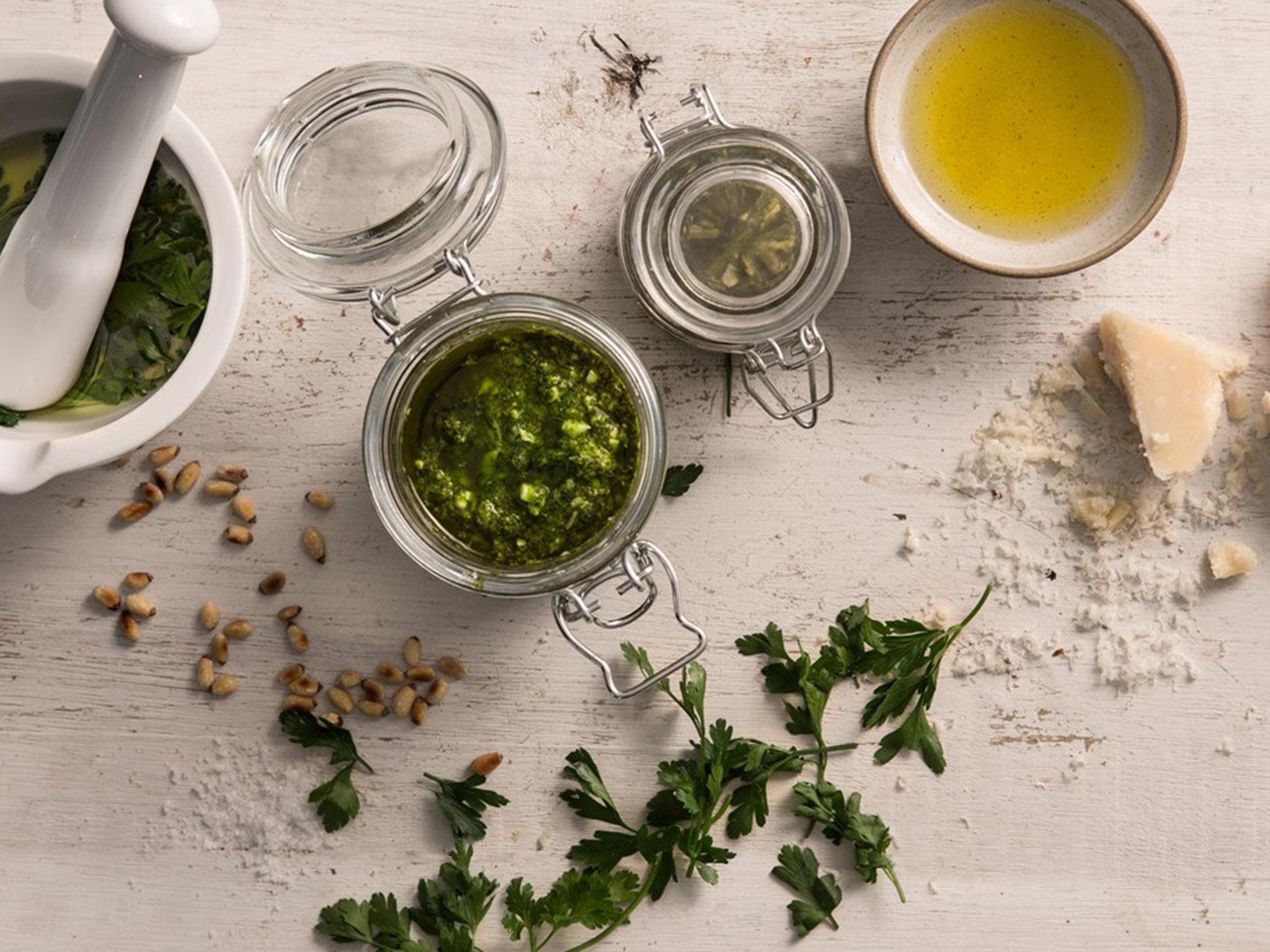
Wild garlic pesto by James Mackenzie
Because of its relatively short season, it’s a good idea to preserve wild garlic in any way you can. You can blitz the leaves in some butter, pickle them in vinegar and freeze them whole for use later in the year. One of the most popular methods, however, is to create a pesto – full of good quality olive oil, toasted pine nuts and umami-rich parmesan. Swap out the basil for wild garlic leaves, keep it in a sealed, sterilised jar and you’ll have a taste of British springtime any month you want. It might taste a bit fiery at first, but once it’s stirred through pasta, stuffed inside chicken breasts or used as a marinade for lamb, the flavours mellow into something amazing.
Wild garlic, 1 large bunch, washed
Curly parsley, 1 small bunch, washed
60g of pine nuts, toasted
60g of parmesan
150ml of olive oil, (I mixed half extra virgin, half normal)
1 dash of lemon juice
Salt
Black pepper
Place all the ingredients into a food processor apart from the olive oil and blitz for a minute or two then slowly pour in the olive oil until blended. Use for pasta, mash, dipping, and so on.
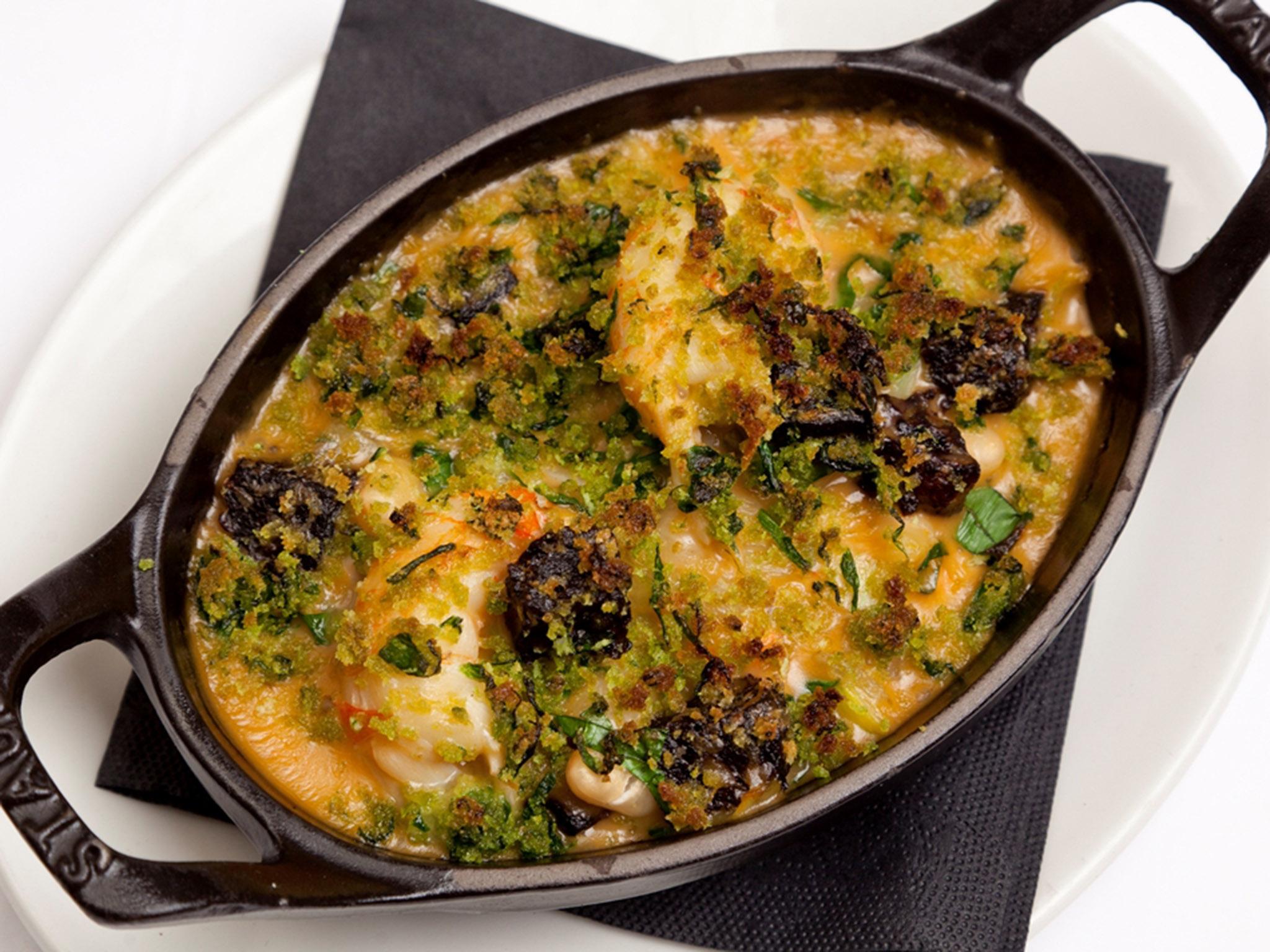
Black pudding, scampi and white bean crumble with wild garlic crust by Food Urchin
Spring is a good time for shellfish, and scampi or langoustines are Rolls Royces in the prawn world. James Mackenzie combines their meat with rich black pudding and creamy white beans in a wine, fennel and star anise-spiked sauce for a hearty seasonal starter. What really makes this dish shine, however, is the crunchy wild garlic crumble scattered over the top, which is given a quick blast under the grill just before serving. The leaves turn the breadcrumbs bright green and the pungent flavour mingles with the cream sauce beautifully.
Langoustines and white beans
16 langoustines, cooked
1 onion
1 leek
1 fennel bulb
1 garlic clove, crushed
1 star anise
200ml of white wine
200ml of double cream
200g of white beans, cooked
Vegetable oil
Crispy black pudding
150g of black pudding
Wild garlic crust
10 wild garlic leaves
150g of white breadcrumbs
50g of butter, melted
Parsley
Salt
Remove the tail meat from the langoustine and set aside, reserving the shells to make a stock for the sauce. Peel and chop the onion, chop the leek and fennel and fry all 3 in a saucepan with a splash of oil. Add the langoustine shells and cook for a further 2 minutes.
Add the garlic, star anise and white wine and pour in enough water to just cover. Simmer for 1 hour then strain through a sieve into another saucepan. Place back on the heat and reduce down to 200ml, then add the cream and reduce to a sauce consistency. Keep the sauce warm.
Cut the black pudding into 2cm pieces and deep fry at 180C until just crispy. Remove and drain on kitchen paper. For the wild garlic crust, add the breadcrumbs, a few parsley leaves and 6 leaves of wild garlic to a blender and blitz until green in colour. Place in a bowl, mix through the melted butter and season with a little salt.
Warm the sauce over a gentle heat, add the white beans and cook until the beans have warmed through. Add the langoustine meat and the crispy black pudding. To finish the sauce, add a little chopped wild garlic and reheat for 2 minutes. Spoon the mixture into a shallow serving dish or 4 individual dishes or ramekins. Sprinkle the wild garlic crumbs over the top and place under a hot grill to colour and crisp up the crumb. Serve immediately.
For more recipes, visit greatbritishchefs.com
Join our commenting forum
Join thought-provoking conversations, follow other Independent readers and see their replies
Comments
Bookmark popover
Removed from bookmarks